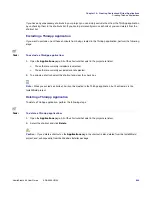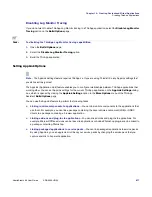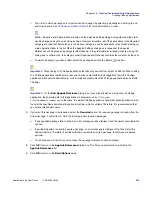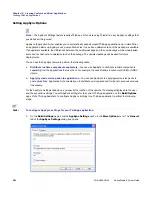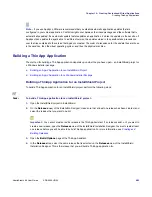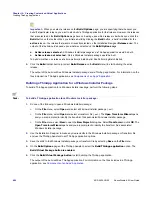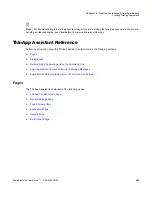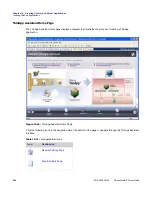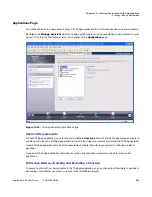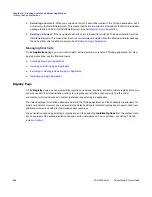
Chapter 10: Creating Customized Virtual Applications
Creating ThinApp Applications
AdminStudio 9.5 User Guide
ADS-0950-UG00
879
•
The order in which packages are imported can be changed by selecting a package and clicking the up
and down arrows. See
Collisions and Order of Import
for more information on order.
Note •
Required and Optional links are listed on the AppLink Settings dialog box together and the order
can be changed using the up and down arrows. However, at runtime, all of the applications in the Required
category are read first, before those in the Optional category, even if applications in the Optional category
were originally higher in the list. When the AppLink Settings dialog box is reopened, the AppLink
References will be grouped by category rather than be in the order that was arranged prior to closing the
dialog box. In other words, the category order (Required and Optional) overrides the order set by the user.
•
To delete a package you have added, select the package and click the Delete (
) button.
Important •
When linking to a ThinApp application that has only one shortcut, select its .EXE file. When linking
to a ThinApp application that has more than one shortcut, select either its Package.DAT file (if the ThinApp
application was built with AdminStudio) or its primary executable file (if the ThinApp application was built with
ThinApp).
Important •
On the
Add AppLink Reference
dialog box, if you click Browse and browse for a ThinApp
application, the absolute path to that application is entered, such as
C:\Program
Files\AppName\filename.exe
. In that case, the parent ThinApp application needs that linked application to be
found at the specified absolute path location at runtime, which is unlikely. Therefore, it is recommended that
you enter a relative path name.
4.
If you want this package to be required, select the
Required
option. If a required package is missing from the
virtual package, it will fail to run. Note the following about required packages:
•
If any specified package fails to import, an error message will be displayed and the parent executable file
will exit.
•
If a wildcard pattern is used to specify a package, no error message is displayed if no files match the
wildcard pattern. Therefore, if a wildcard pattern is used to specify a package, the reference is always
optional.
•
To continue even if load errors occur, make the package references optional instead.
5.
Click
OK
to return to the
AppLink References
dialog box. The item you selected is now listed in the
AppLink References
list.
6.
Click
OK
to return to the
Build Options
page.
Summary of Contents for ADMINSTUDIO 9.5
Page 1: ...AdminStudio 9 5 User Guide Version 9 5...
Page 50: ...Contents 50 ADS 0950 UG00 AdminStudio 9 5 User Guide...
Page 52: ...52 ADS 0950 UG00 AdminStudio 9 5 User Guide...
Page 156: ...156 ADS 0950 UG00 AdminStudio 9 5 User Guide...
Page 440: ...440 ADS 0950 UG00 AdminStudio 9 5 User Guide...
Page 1090: ...1090 ADS 0950 UG00 AdminStudio 9 5 User Guide...
Page 1426: ...1426 ADS 0950 UG00 AdminStudio 9 5 User Guide...
Page 1686: ...1686 ADS 0950 UG00 AdminStudio 9 5 User Guide...
Page 1794: ...Chapter 24 AdminStudio Public API Reference 1794 ADS 0950 UG00 AdminStudio 9 5 User Guide...
Page 1842: ...Index 1842 ADS 0950 UG00 AdminStudio 9 5 User Guide...





